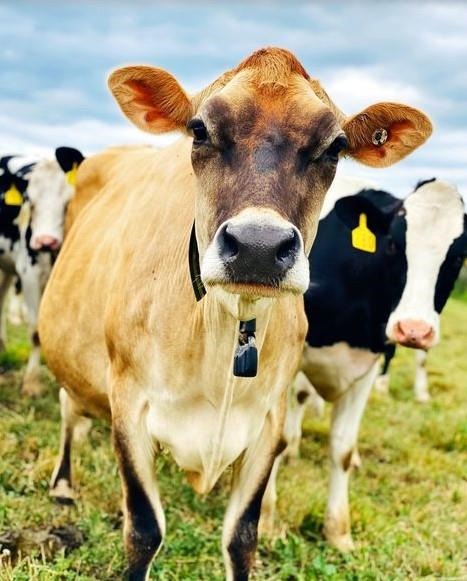By Lynn Olthof and Barry Bradford

photo by Cameron Cook
The question of breed profitability and efficiency has again come to the forefront as producers face increasing feed costs and volatile milk prices. Unfortunately, there is a lack of solid data available to objectively evaluate claims on either side of the debate.
A recent Michigan State University study evaluated costs and revenues of Jersey and Holstein cows managed in the same manner and location on three dairy farms in or near Michigan. Partial budgets were constructed to assess breed differences in milk revenue, milk bonuses and discounts, feed costs, cost of herd replacements, and value of cull animals and non-replacement calves.
The study found that Holstein cows were, on average, $456 more profitable per cow annually than Jersey cows, with 77% of the revenue advantage for Holsteins came from producing about 810 additional pounds of components annually, which was not compensated for by the lower cost of production for Jersey cows. Importantly, the financial advantage for Holsteins was similar across all three dairies, increasing confidence in the findings.
Despite the disadvantage in profitability, Jersey cows were slightly more feed efficient at 1.75 lb. of energy-corrected milk per lb. of feed dry matter compared to 1.67 for Holstein cows. Furthermore, Jersey feed cost per lb. of fat was $1.82, while Holstein cows had feed costs of $1.97 per lb. of fat.
Given these feed efficiency advantages, why weren’t Jerseys more profitable than Holsteins? Each Holstein cow, occupying the same single freestall and time in the milking parlor, for example, produced much more total revenue, thereby greatly diluting the fixed costs of production relative to Jersey cows. Although feed is the largest single cost on a dairy, maximizing feed efficiency doesn’t necessarily maximize profitability.
The study also analyzed what assumptions might have influenced the finding of greater profitability for Holstein cows. Were there variables that, if altered slightly, would have changed the overall conclusions? In general, changes in milk component prices, bonuses, or discounts did not lead to altered conclusions. The only variable that leads to an altered outcome was an increase in average Jersey productivity. If Holstein production does not change, increasing Jersey productivity from 60 to 70 lb. of milk per day with the same component concentrations would allow them to match the profitability of Holsteins. Of course, it is unclear what short-term changes would lead to such dramatic improvements in Jersey productivity without aiding Holstein productivity at the same time.
These results do not apply to new facilities, where cost savings from scaling to the smaller Jersey cow may narrow the gap. In the current financial environment in Michigan, though, transitioning from Holstein to Jersey cows in existing facilities does not appear to be a profitable decision for most dairy farms.
Source : msu.edu